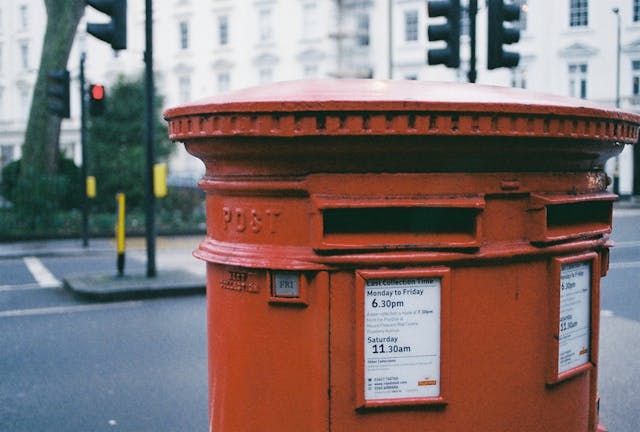
When was the first postal service? There have been postal services for thousands of years, but they took on a very different form to the modern postal service. The concept behind the modern postal service started in the 19th century.
Since people have been able to write, there has been a need to send and receive letters. The letters would be taken and delivered by servants in a household, or by somebody paid to deliver the letter. The majority of people could not read or write and there was no need for most people to need a letter delivery service. Those people that could read were usually wealthy and they could afford to pay someone to deliver their letters. These people used a seal to close the folded letter nd make sure it wasn’t read by anyone it shouldn’t be. The seal was something personal, usually a house crest. The earliest seals have been found in Mesopotamia about 3500 BC and people in Egypt used mud or clay instead of wax. Wax seals were being used by 2000 BC. However, this postal service was a letter delivery service and it was not centralized. It was also pretty much only for official government business, which is not surprising because only people who worked for the government could read and write.
The first postal service was started in the Persian Empire in 559 BC and it was called Chapar Khaneh. “Chapar” means “courier” and “khaneh” means “house”. It differs from the early system of paying someone to take a letter because it was a system dedicated to delivering letters. It was started by Cyrus the Great, who was the founder of the Persian Empire. He conquered and combined several other empires and he realized that he needed a good way to send messages from one side of his empire to another. He came up with the idea of houses located at distances of about 30 km along a road called the Royal Road. This was a road that stretched across the empire. A courier would be given a letter at one end and they would start to ride along the road. At every house, they could get supplies and a new horse, allowing them to complete the journey much more quickly than a single unaided rider could. This meant Cyrus could send orders across his empire to his troops very rapidly and get reports back as well. A letter could reach the far side of the empire in about 7 to 9 days. This system was excellent but, as with the Egyptians, it was only limited to government business. The way stations also served as rest stops and trading posts for travelers. It was common for small towns to spring up around them.
The Romans were the next people to improve on the postal service. Soldiers and slaves were used to deliver mail and parcels, but Emperor Augustus decided to create a national system based on the Chapar Khaneh that the Persians had used. It was a system of way stations that a courier could use to get new horses and food. The Roman system was far superior to the Persian system because they had a much larger network of well paved roads. It was estimated that a Roman courier could cover about 80 km a day or more.
The Romans carried their system all over Europe but that was the most common system for centuries. However, after the printing press was invented in the 15th century, coupled with other changes in agricultural technology, more people learned to read and write. Sending letters became far more common and a system of way stations wouldn’t be enough. Religious institutions and universities started to send letters and they all used their own systems to send the letters. It became common to hire somebody to take a letter again.
The next change came as international trade picked up. Rudimentary mail systems had developed within countries, but now people now wanted to send letters and parcels to other countries and that wasn’t as easy to do. You could pay someone on the ship, but a postal service was necessary. Lots of countries started to develop postal treaties, but these became very complicated and difficult to manage. By the 19th century, there were too many different systems and everything was so confusing that it needed reforming. Sir Rowland Hill, who introduced the first postage stamp, set about reforming the system. The system he made is, by and large, the system we use today and the one we take for granted. It has come an awful long way since the Royal Road in Persia. And this is what I learned today.
Try these
Sources
https://www.upu.int/en/universal-postal-union/about-upu/history
https://www.hived.space/blog/a-brief-history-of-postal-services
https://www.bbc.com/travel/article/20200624-iran-the-surprising-origins-of-the-postal-service
https://en.wikipedia.org/wiki/Timeline_of_postal_history
https://en.wikipedia.org/wiki/Chapar_Khaneh
https://en.wikipedia.org/wiki/Cyrus_the_Great
https://bounde.com.au/blogs/news/a-brief-history-of-wax-seals-from-ancient-egypt-to-today
Photo by sl wong: https://www.pexels.com/photo/oblong-brown-metal-mailbox-947384/
